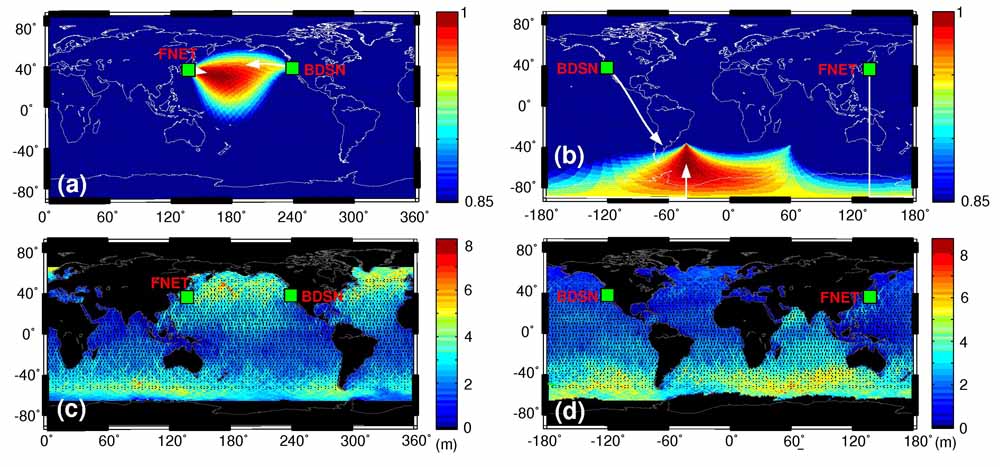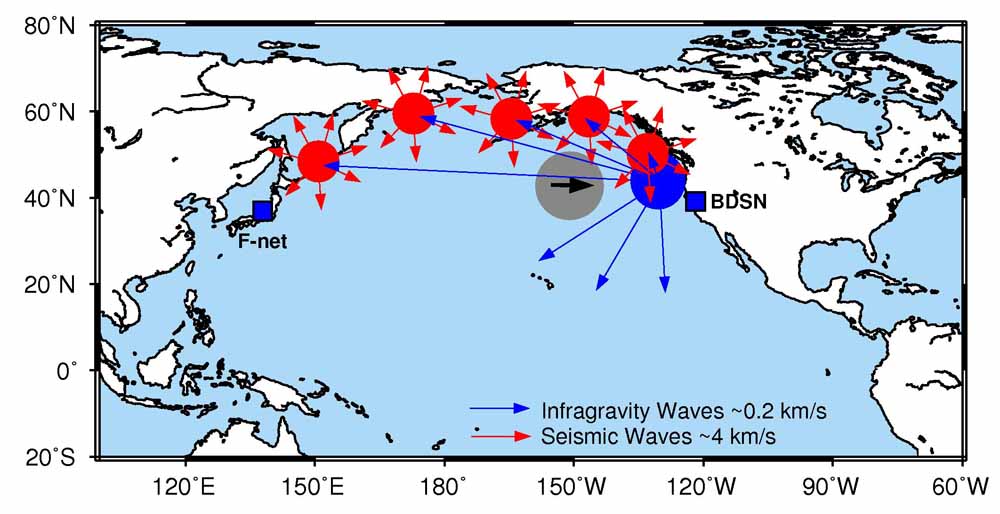Continuous Free Oscillations of the Earth

Comparison of seasonal variations in the distribution of hum-related noise (degree one only) and significant wave height in the year 2000. a, b, The directions corresponding to mean amplitudes that are larger than 85% of the maximum are combined for the two arrays in winter (a) and in summer (b) to obtain the region of predominant sources in each season. Arrows indicates the direction of maxima. Both arrays are pointing to the North Paciric Ocean in the winter and to the southern oceans in the summer. c, d, Global distribution of significant wave height, in the winter (c) and in the summer (d), averaged from TOPEX/Poseidon images for the months of January and July 2000, respectively. Black colour in c and d indicates locations with no data.

A schematic plot of the mechanism of conversion of energy from storm-related ocean surface waves to seismic waves. Gray circle indicates the moving storm, and blue and red circles (arrows) represent the source regions (radiation) of infragravity and seismic waves, respectively.
References
Junkee Rhie and Barbara Romanowicz, (2004), Excitation of Earth's continuous free oscillations by atmosphere-ocean-seafloor coupling, Nature, 431, 552-556. [PDF]
Junkee Rhie and Barbara Romanowicz, (2006), A study of the relation between ocean storms and the Earth's hum, Geochemistry Geophysiscs Geosystems., 7, Q1004, doi:10.1029/2006GC001274. [PDF]